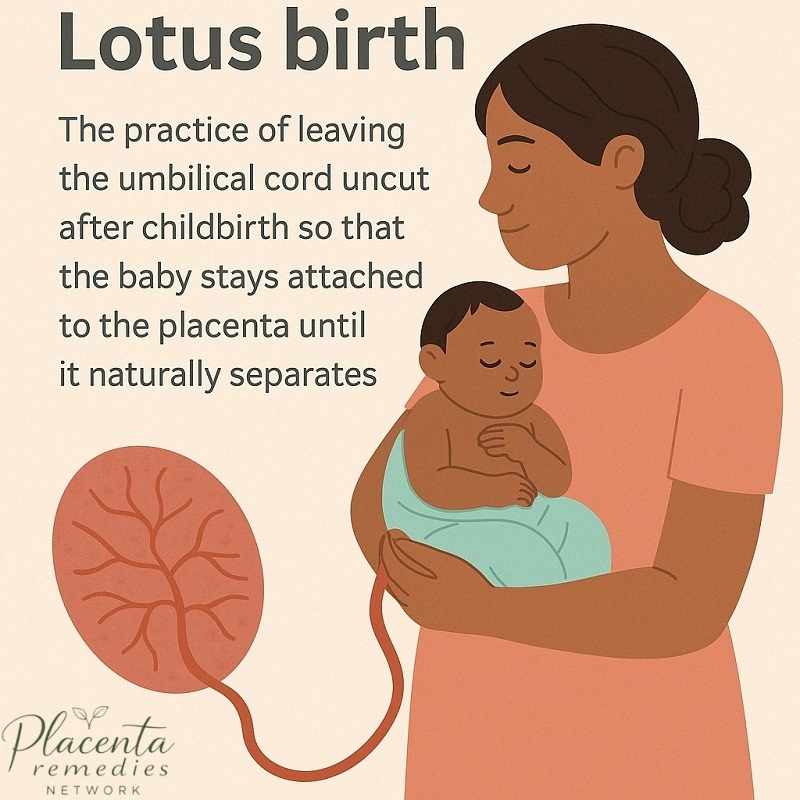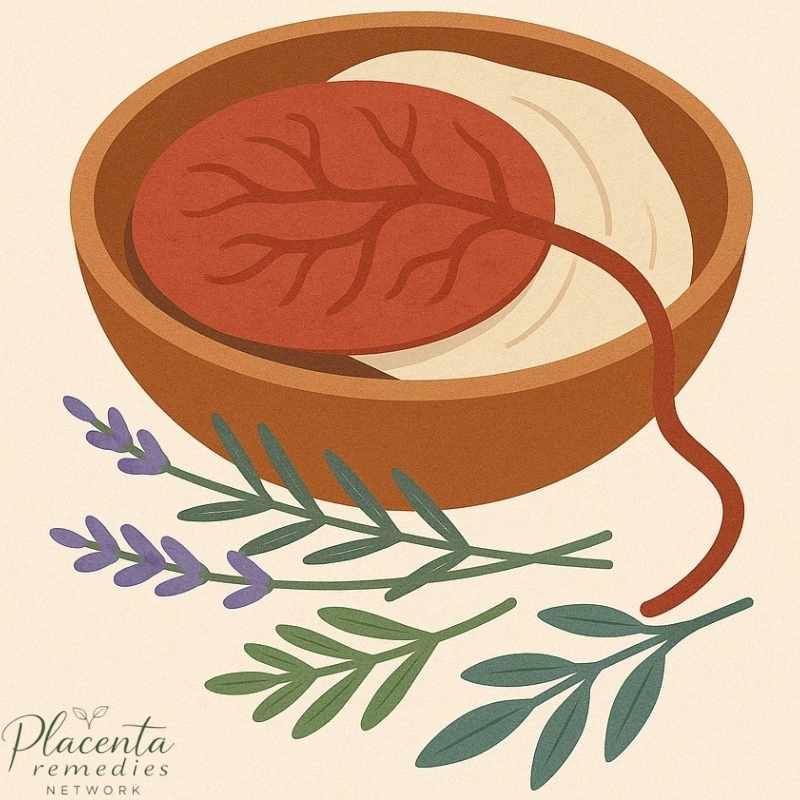Lotus birth refers to a method of postnatal care in which the newborn stays connected to the umbilical cord and placenta until they separate naturally. This usually happens within three to five days. Parents who choose lotus birth often view the placenta as a sacred organ and prefer to honor it through a slow, natural detachment process.
This article covers every step, decision, and detail involved in choosing lotus birth, based on trusted practices and firsthand stories. It includes preparation tips, practical guidance, and reasons many parents choose this gentle method.
What Is a Lotus Birth?

Lotus birth leaves the umbilical cord unclamped and uncut after delivery. Instead of removing the placenta immediately, it remains attached to the newborn until the cord falls away by itself. This natural separation usually takes three to five days. The placenta is stored and preserved using dried herbs, essential oils, or natural salts to avoid odor and bacterial growth.
Many families view this method as a way to promote bonding, honor the placenta, and avoid any medical interference that might feel disruptive in those early moments of life. Some also believe it helps reduce trauma for the baby by allowing a gentle transition outside the womb.
The Role of the Placenta in Lotus Birth
The placenta plays a vital role during pregnancy. It provides oxygen, nutrients, and waste removal for the baby. In lotus birth, parents continue to respect its function even after delivery. They treat it as an extension of the newborn for a few more days, often creating rituals around it.

Some wrap it in cloth, place it in bowls lined with herbs, or use salt and dried flowers to preserve it. Common herbs include:
- Lavender
- Rosemary
- Thyme
- Sage
Daily salting and turning of the placenta help maintain freshness. Some families choose to make tinctures or essences from small parts of the placenta, especially if they plan to honor its energy in long-term health practices.
Real-Life Story: A Lotus Birth in Switzerland
On February 24, 2019, at 6:15 am, a placenta remedies specialist named Carolina Olmos welcomed her baby boy during a peaceful home birth in Switzerland. She chose to practice lotus birth and used a homemade mixture of Himalayan salt, rose water, lavender, rosemary, and thyme to preserve the placenta.

Each day, she salted the placenta in the morning and again before bedtime. She rotated it regularly, treating both sides with care. She stored it on a duvet and wrapped it with soft materials to avoid contamination. Her approach kept the placenta fresh and filled the room with a pleasant herbal scent.
By day five, the cord fell off naturally, and her baby’s belly looked healthy and calm. Carolina also created tinctures, took prints of the placenta, and consumed a small piece in a meaningful ceremony. She described the experience as deeply moving and highly recommended it to mothers looking for a more intuitive postpartum journey.
Step-by-Step Guide to Lotus Birth

Parents interested in lotus birth can follow a clear sequence:
Before Birth
- Speak with a midwife or doula who supports lotus birth
- Gather supplies in advance: cloths, sea salt, sieve, herbs, and a clean placenta bag
- Decide if you will make remedies from the placenta later
During Birth
- Do not clamp or cut the cord
- Let the placenta birth naturally
- Place the placenta in a sterile bowl or colander next to the mother
- Wait until all the cord blood has transferred to the baby
After Birth
- Rinse the placenta with warm water and pat it dry
- Allow it to drain in a colander for 24 hours
- Wrap it with a clean cloth or place it in a preservation pouch
- Salt the placenta daily and use herbs for fragrance and antimicrobial protection
- Keep the placenta near the baby but protect it with breathable fabric
- Reduce movement and bathe the baby as usual, keeping the placenta secure
- Monitor for any signs of infection or odor
The cord usually falls off between day three and five. Once that happens, discard the placenta, bury it, or complete any personal rituals. Some families plant a tree over the buried placenta.
Placenta Remedies and Lotus Birth Compatibility
Placenta encapsulation and lotus birth cannot fully overlap. Encapsulation requires immediate processing, which is not compatible with waiting several days for cord detachment. However, it is possible to use a small part of the placenta for tinctures, essences, or homeopathy remedies before preserving the rest.
For those planning both options, early preparation is key. A specialist can remove a piece shortly after birth before preservation begins.
Why Some Parents Choose Lotus Birth
Several reasons motivate families to explore this path:
- Gentle Transition: Avoids a sudden cut and allows for gradual separation
- Cultural Significance: Many cultures view the placenta as sacred
- Personal Ceremony: Offers time for rituals like prints, burial, or keepsakes
- Immune Protection: Some believe it reduces the risk of infection due to minimal interference
Parents often feel lotus birth aligns with their values and helps create a peaceful start for the baby.
Considerations Before Choosing Lotus Birth
Families must consider hygiene, timing, and lifestyle when selecting lotus birth. The process demands careful daily attention and low movement for several days. Some homes may not have the space or calm setting needed.
Other considerations include:
- Climate and temperature control
- Access to herbal supplies
- A specialist who supports the method
- Awareness of local regulations or hospital policies
If you choose a hospital birth, you may need to discuss your plan in advance to ensure cooperation from staff.
Last Words
Lotus birth offers a gentle, mindful way to welcome a baby. It invites calm, promotes respect for the placenta, and allows for meaningful rituals. Each day of the process encourages quiet care, bonding, and reflection.
It is not a common practice in modern medical settings, but with proper knowledge and preparation, many families have found it deeply rewarding.
New parents should speak with trusted midwives, doulas, or placenta remedy specialists to create a plan that aligns with their needs.

